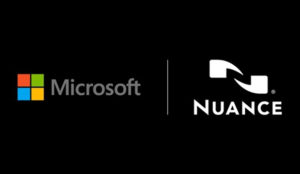
IBM and Internet service provider International Broadband Electric Communications announced plans Wednesday to begin deploying broadband over power line (BPL) networks in Alabama, Indiana, Michigan and Virginia. The two companies are establishing the BPL networks for nearly 200,000 rural residents currently served by seven electrical cooperatives.
The IBM/IBEC initiative is just one of several from companies seeking a piece of the economic stimulus package pie. The U.S. federal government has set aside at least US$2.5 billion for the U.S. Department of Agriculture Rural Development Program. Using low-interest rural broadband access loans, IBEC intends to provide residents with broadband access using the existing power line infrastructure in each community.
For its part, IBM said it will provide overall technical expertise, oversee project management and train line crews on how to install BPL technology.
“Basically, $2.5 billion of the … stimulus that just passed is going to the USDA Rural Utilities Service for use in similar ways. In the past, the USDA RUS has provided low-interest loans to IBEC to make this happen. So we believe the opportunity is there to extend this in the future,” Vineeta Durani, an IBM spokesperson, told the E-Commerce Times.
IBM and IBEC announced their partnership last November. The two are working with nearly 900 electric cooperatives to provide broadband access to the 45 percent of U.S. residents who do not have access to traditional broadband technologies.
BP-What?
BPL technology is not new and has been around a while, but it has only recently begun to come into its own, according to Vittore.
The technology uses existing electric utility power lines to transmit modified radio signals that carry voice and Internet data. For consumers, the only equipment required to access the technology is a modem plugged into an existing electrical outlet.
“BPL has been one of those technologies that has always been out there as an outlier in terms of the number of people getting service through it,” Vince Vittore, a Yankee Group analyst, told the E-Commerce Times. “It’s been used quite a bit in some markets, particularly in Eastern Europe and the Middle East, as an in-home technology. You do see it a little bit in Europe and the North American market as an in-home technology. But as an access technology from service provider to user, it’s relatively rare,” he explained.
“It’s significant in that you have a couple of companies stepping up and ready to deploy the technology,” Vittore added.
An effort by the Michigan-based Midwest Energy Cooperative to gauge interest in BPL resulted in a waiting list some 4,000 customers long after just one week, according to IBM and IBEC.
“I’m happy to see the technology finally maturing and look forward to watching the deployment. If the numbers are correct in the release they put out today, that’s pretty significant volume. Four thousand people on a waiting list — that’s great,” said Vittore.
Is Broadband Access Good for the Economy?
BPL may be the key to extending broadband access to rural areas, given that most homes not covered by traditional broadband service do have electricity.
“You have a natural inclination to use the existing structure that is there. Whether they will get the funding from the stimulus bill is a little uncertain. But certainly we believe that BPL will be part of the overall solution,” Vittore noted.
Consumers in rural areas seeking broadband access have generally had only two options — satellite or some type of fixed wireless service, a technology that has been something of a non-starter in some markets, according to Vittore.
“BPL is significant if you do not have a wireline broadband option because of the speed capabilities and the ubiquitous infrastructure that’s out there,” he pointed out.
The communities in which BPL will be deployed should also see an economic impact from their access to the new technology.
“When people have broadband service, generally there is a rise in economic activity and economic development. The factor that we’re wrestling with now is how much of that is attributable to people getting broadband service,” Vittore said.
























































Initial trials of BPL in locations like Lehigh Valley, PA resulted in significant interference to AM ateur radio hobbyists and other shortwave radio enthusiasts.
Hopefully this new initiative utilizes non-RF-interfering architecture.
Google the phrase "BPL interference" for the details.